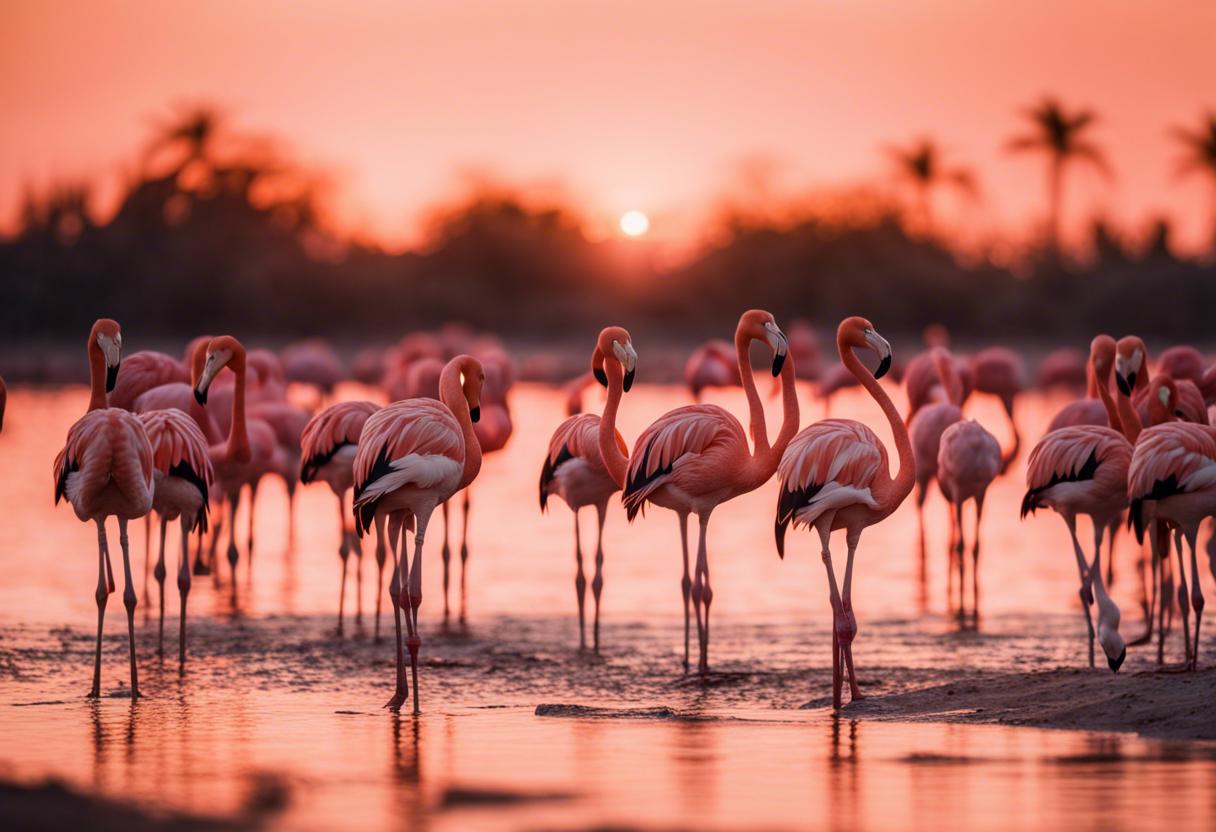As a keen birdwatcher and volunteer at the Ebro Delta Nature Reserve in Catalonia, I’m excited to receive an invitation to be involved in the tagging of juvenile flamingos over the summer. The information provided initially is somewhat limited – simply instructing us to wear shorts and old trainers and to register for an information meeting on the Saturday evening prior to the day set for the tagging, scheduled for a Sunday morning from 4am to 10am. I’m left curious about the process: will they employ nets to snare the birds? Through personal observation, I’m aware that younger flamingos are a grey colour, not yet developing the characteristic pink hue that is a result of their diet, rich in crustaceans. Additionally, they are brought up in large nurseries, watched over and guided by a selection of mature adults. Until now, I hadn’t realised they had not yet developed the ability to fly.
The complexity of the planning becomes evident on the Saturday evening, preceding the tagging at the local sports centre. This is the gathering point for the large group of 238 individuals, comprised of volunteers like myself, park rangers, event coordinators, photographers, biologists and several subject matter experts. Upon signing in, we’re all provided with a colour-coded T-shirt (mine happens to be green, a fitting choice for a man of Irish descent, I thought) and a sticker with our name, group number and assigned role. A handbook supplied with the shirt further describes the tasks expected from each role, which are further explained over the course of the meeting. Afterwards, groups gather informally to coordinate the next day’s transport.
On the Sunday morning, there’s a brief window to savor a cup of coffee and a pastry, following which we pile into cars for the trip to the nature reserve located at the delta’s furthest reaches, a region inaccessible to the general public. The lengthy convoy splits into three smaller groups shortly before reaching the location – a sandy stretch bordered by lagoons. Keeping quiet is critical. We are each handed a long staff made of bamboo, and under the guidance of our group leader, traverse the lagoon in a file, maintaining a distance of a meter between each individual.
While the water barely reaches our shins, it requires absolute focus to navigate over the excessively slick mud beneath. Only the occasional gurgle of water and unexpected avian cry break the eerie silence. The obscured vision and unstable footing makes it an otherworldly experience.
Just as daybreak starts to show, shadows morph into a second group on the opposite shore, extending just like us from enclosures that reach the waist. These fences are designed to direct the flamingos towards a circular pen.
But everyone’s attention is fixed on the large, obscure area at the distant part of the lake – assumed to be the flamingo hatchery.
As the third squad moves in, the patch begins to slowly come towards us, the mature flamingo caregivers flying away.
The progression is rapid — the young birds move quicker, their wings beating with urgency. When I manage to wade to the sandy knoll where the birds are restrained, it’s a visual feast.
Unfortunately, one straggler is left behind but eventually reunites with the group to a chorus of warm applause.
The lanky, ashy creatures pulsate back and forth in unhurried waves, appearing almost within hand’s distance. When we’ve seen enough of this spectacle, we’re summoned to busy ourselves with four stations stemming from the encampment.
Each fowl is passed on to the awaiting line of “porters”, who turn the bird’s back to their torso, their hands wrapping its folded wings and legs, before guiding it around the station circuit.
Initially, each bird is tagged, followed by measuring its beak and wings, and finally weighed. Every detail is painstakingly noted by the group’s secretary.
Accompanying the procession of porters placing their load on the weighing table, another line of “releasers” carry their bird back to the muddy area, gently setting it down to recuperate, lever itself upright, and then stagger back to the lake.
I am one of the releasers and as I approach the table I am filled with fear, eyeing my upcoming feathery charge.
A huge majority of them remain placid, with their necks and heads hanging limply. I observe they probably have more reason to be scared than I do, and so, I tenderly whisper words of comfort to my warm bundle tucked into my chest as I transport it back to freedom.
Once a satisfactory amount of tasks is considered complete, we arrange ourselves in the vee to soak in the closing spectacle. The gate swings open, freeing the remaining feathery inhabitants to resume their journey back to their origins, presumably perplexed by the day’s happenings.
Sadly, one little straggler gets stranded, but it ultimately manages to catch up with its fellows, welcomed by delighted clapping.
Capping off the day, fideuá, a dish comprising noodles simmered in fish broth in capacious paella pans, is served to all those involved, paired with wine and rife with merriment.
Hailing from Dublin, the experienced Colm Rush shared his knowledge of English in various locations including Spain, Italy, Cyprus, Tunisia, not forgetting his homeland Ireland and England. Choosing to make Pamplona, in Spain’s north, his home—he devoted 15 years instructing at the Official School of Languages, specifically tasked with adult education. Now his base is L’Ametlla de Mar, situated in Catalunya.

